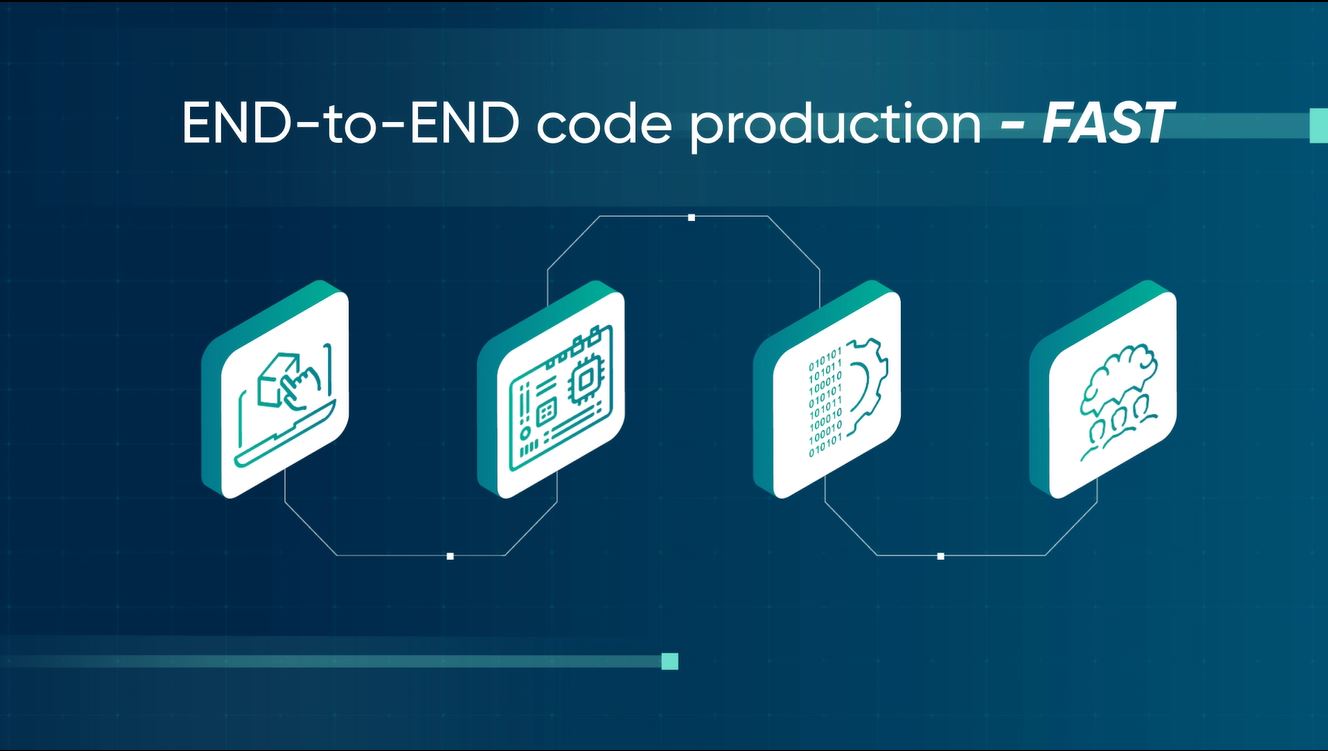Resources Industries: Military / Defense
Live Webinar: Create and Evaluate Embedded GUI Applications for Infineon PSoC™ 6 Using Infineon ModusToolbox™ and Altia

Join us to learn more about:
- The features and benefits of Infineon ModusToolbox™ software
- How Altia can help you design, integrate and deploy rich, top-performing GUIs efficiently
- Altia’s ModusToolbox™ integration and benefits
- Live Q&A
The Complete HMI Platform for Automotive Cockpit Displays

How 100 Years of Auto UX Benefits Marine Display GUI Design

Altia – Concept-to-Code GUI Software

Altia Learn Drives Results with New Impactful Learning Tools

The modern workforce can be spread far and wide, spanning different time zones and sometimes across the world. As a result, a centralized singular approach to training can prove to be inflexible and challenging to schedule for a busy and dynamic team.
Altia Learn is a new user-friendly online learning management system that empowers graphical user interface (GUI) designers and engineers to learn how to make the most of Altia products by offering an innovative training approach designed for today’s modern workplace. It is built on the premise that every employee has their learning style and time constraints, which means they learn in different ways and at different speeds.
The innovative learning platform allows companies to better understand how their teams learn so that they can deliver on-demand training programs personalized for each individual, regardless of their level of expertise or location.
Tools to Help Your Team Design, Develop and Deploy Your GUI
The Altia Learn platform is designed to help companies increase their employees’ productivity, competencies and engagement while reducing costs associated with training and development programs. It shows what can be built within the embedded GUI space and how to build it through courses consisting of training modules, videos and downloadable resources. After registering, users become part of the Altia Learn User Community, joining an expansive group of Altia users who have already deployed Altia-generated code in over 100 million devices worldwide.
Built on a robust set of learning management tools that provide users access to training materials and resources on demand, the unique learning management system empowers engineers with the tools and knowledge base they need to create innovative products with embedded GUIs. This is accomplished by teaching users how to build user interfaces that are customizable, interactive and responsive to user input. It also includes an extensive library of interactive training courses and tools that allow engineers to measure their understanding of key concepts.
The interactive tutorials are designed as hands-on training activities, reinforcing course content through experiential learning activities. Courses require users to navigate the software interface, complete specific tasks or learn critical concepts related to the software’s functionality. A library of downloadable resources is available for immersive exercises to reinforce processes and concepts that translate into engineers’ real-world workflow.
Each course is designed to be approachable and concise, providing a summary containing the topics covered and videos typically ranging from 5-7 minutes to keep the information manageable and focused.
Altia Learn courses can serve as a helpful reference when needed. If a challenge arises, engineers can return to a training module to find and refamiliarize themselves with a particular concept or process they need for the task at hand and quickly return to their workflow with a better understanding of the process.
A Learning Management System Tailored to Your Team’s Needs
Altia believes that employees are the most essential resource of a business, and that training and development is the key to getting the most out of your team. We have, therefore, developed a robust learning management system that allows managers to create learning paths tailored for each user based on their learning goals, job role and familiarity with GUI development through Altia products.
After registration, Altia Learn users are greeted with a dashboard showing an overview of their training history, progress and accomplishments. The overview includes the number of courses they have completed and how many in which they are enrolled, while achievement badges provide positive progress ownership and encouragement in their efforts.
The system also shows available courses, suggests learning paths and recommended courses. Personalized assessments are designed to measure core competencies and identify knowledge gaps to address where additional training can be administered. The assessments include identifying strengths and weaknesses in conceptual understanding and application.
This means managers can design learning plans for individual users based on their preferred learning style or other factors such as current level of expertise or time available for training so that the approach to training is appropriate for the individual and does not waste time with any unnecessary course material. Managers can add courses as the user progresses to provide comprehensive training and meet evolving training goals.
At launch, Altia Learn has a variety of learning modules for users of all skill levels in GUI development, including varied topics such as what makes Altia a leader in embedded graphical user interfaces, how to begin the initial steps of building your specialized dynamic GUIs and how to process automation through Altia GUI development and code generation. New courses will be added to the site regularly to cover an even broader scope of GUI design, development and deployment.
Altia Learn is Your Guide to GUI Success
Altia Learn is a new way to empower Altia’s customers by providing them with the tools they need to successfully design, develop and deploy top-tier graphical user interfaces. The on-demand learning management system delivers immersive, hands-on training materials to teach users how to employ the tasks and concepts covered in the training.
The platform offers the flexibility of being an always-available resource, meeting the needs of all skill levels and competencies through tailored training paths to reduce downtime and increase productivity. Managers can track course progression and address any areas needing improvement while ensuring that their team receives consistent and concise training on Altia’s GUI development software directly from the experts at Altia.
Altia will continue to enhance this program with more resources and training materials, so please check back often or contact us today for more information at altia.com.
How to Reduce Power Consumption in EV HMIs

A Roadmap for Designing and Deploying Medical Device GUIs

Freeware GUIs are expensive

How Game Design Tools Are Modernizing Automotive Cockpits

Video games are raising the bar for what’s possible for digital experiences, incorporating beautiful design elements like 3D graphics to create detailed images that delight consumers. Automotive HMI designers are trying to push the envelope with their cockpit display graphics, designing similar elements into their instrument clusters, infotainment systems and other car displays. We’ve started to see graphics created with Unity and Unreal Engine, for example, in automotive applications. But car displays aren’t video games—nor should they be treated that way. So how can OEMs deliver these powerful 3D scenes into their next generation HMIs?
Altia is the solution that bridges the gap between gaming software and a production HMI, enabling designers and developers to deliver gaming 3D design elements into their automotive cockpit displays.
Importing the Artist’s Vision
Some premium car brands already use expensive processors that can handle 3D gaming graphics. Automotive display designers want to offer beautiful HMIs for the entire brand fleet, so they’re challenged with finding creative ways to bring that same premium graphical experience to hardware better suited to mid- and entry-level vehicles.
There’s also the matter of complying with NHTSA requirements and ISO 26262. Gaming graphics companies are too busy enhancing their software for gaming applications to be concerned with meeting the many compliance and functional safety standards involved in automotive applications. An automotive-focused software partner who can leverage gaming graphics in HMI designs is necessary to accommodate these powerful 3D elements and mission-critical needs.
Altia helps make the artist’s vision fit within the automotive cockpit by importing graphics from these powerful gaming graphics software tools into HMI designs, thus enabling slick special effects, 3D, photo-realistic scenes and sophisticated lighting. Case in point: Altia’s flexible ecosystem architecture allowed Cadillac to leverage Unreal Engine in the automotive display without losing sight of automotive functional safety requirements.
Like other popular graphics tools and 3D authoring tools, Unity and Unreal have become part of the new path to embedded GUI success. Like Adobe Photoshop, Illustrator, Maya and Blender, game engines empower artists to create better graphics faster. Altia Design brings together content from these various tools to develop an integrated solution.
Getting to Embedded Hardware
Unreal Engine and Unity can do a lot for your designers, but they can’t get them all the way into the automotive cockpit. These large engines are designed to run on gaming PCs, so they don’t have to be efficient enough to run on the embedded hardware used in automotive applications.
The two companies are busy serving the needs of the massive gaming market, so they don’t have the time to be focused on architecting their technology to accommodate automotive OEMs. Fortunately, Altia makes it possible to import graphical assets from cutting-edge 3D gaming software and make them viable for embedded GUI teams by:
- Scaling down assets to run on hardware with fewer resources and better performance.
- Rendering scenes more efficiently than native Unity or Unreal applications to account for the differences between a gaming PC and embedded hardware.
- Adding rendering capabilities and features as embedded hardware improves.
General Motors leveraged Altia’s scalability features for 3D gaming graphics to design some elements of the passenger display in the Cadillac LYRIQ.
Why Unity and Unreal Need Altia to Revolutionize Automotive Cockpits
Altia provides automotive OEMs with features they can’t get from Unity and Unreal alone:
- MISRA compliance for robust code
- ASPICE development
- Functional safety
- Government standards like boot time, PRNDL and other NHTSA standards
At the same time, Unity and Unreal use more RAM and Flash than is typically available for an automotive display. It takes a third party like Altia to meet boot time and other needs for automotive robustness. Altia renders more efficiently to save power and resources, which is especially important as the world moves toward EVs.
How Altia Works with Game Engines
Altia is the avenue through which automotive display designers can bring advanced assets like 3D graphics into the automotive cockpit. There are various ways in which Altia can engage with Unity, Unreal or any other graphic tool.
The partnership can be as simple as importing files into Altia Design and generating code with DeepScreen. Embedded GUI teams from automotive and beyond are already leveraging this method to bring assets from their favorite design tools into Altia Design and then add the animations or behaviors necessary for the GUI before generating the production code that gets those pixels from their artists into production devices.
Alternatively, designers can use the game engine to do all the rendering in the cockpit. Altia serves as the third party to handle concerns such as the fast boot splash screen and safety content.
It all comes down to what the automotive OEM wants. To transfer a design from a game engine to Altia, the team can export the design as an FBX file. Unity and Unreal import from different sources, so Altia needs to import in a similar fashion to take advantage of more capabilities of the tools. There are other options for high-end GUI designs, too. Some tools’ engines can import glTF files and support OpenGL ES, but it won’t run as well on embedded hardware. Altia takes half of the memory and flash.
The Good News for Automotive Display Designers
Fortunately, you don’t have to choose between modern HMIs and efficient rendering. You can do all your design on Unreal or Unity, then import your work into the Altia toolchain to make it safe and performant for production automotive applications. Unity and Unreal alone aren’t designed for automotive applications, but Altia can incorporate assets from these tools into HMI designs and bring these graphics to life in an automotive cockpit.
Vehicles are judged by many different standards. Increasingly, the quality of the automotive display is becoming one of the important components for drivers. Altia’s software and services help automotive display design teams make the most of the available technology to create HMIs that create a competitive advantage.
Now it’s possible to use assets from leading gaming design tools like Unity and Unreal in the automotive cockpit. Reach out today to Altia to learn more or get started.
